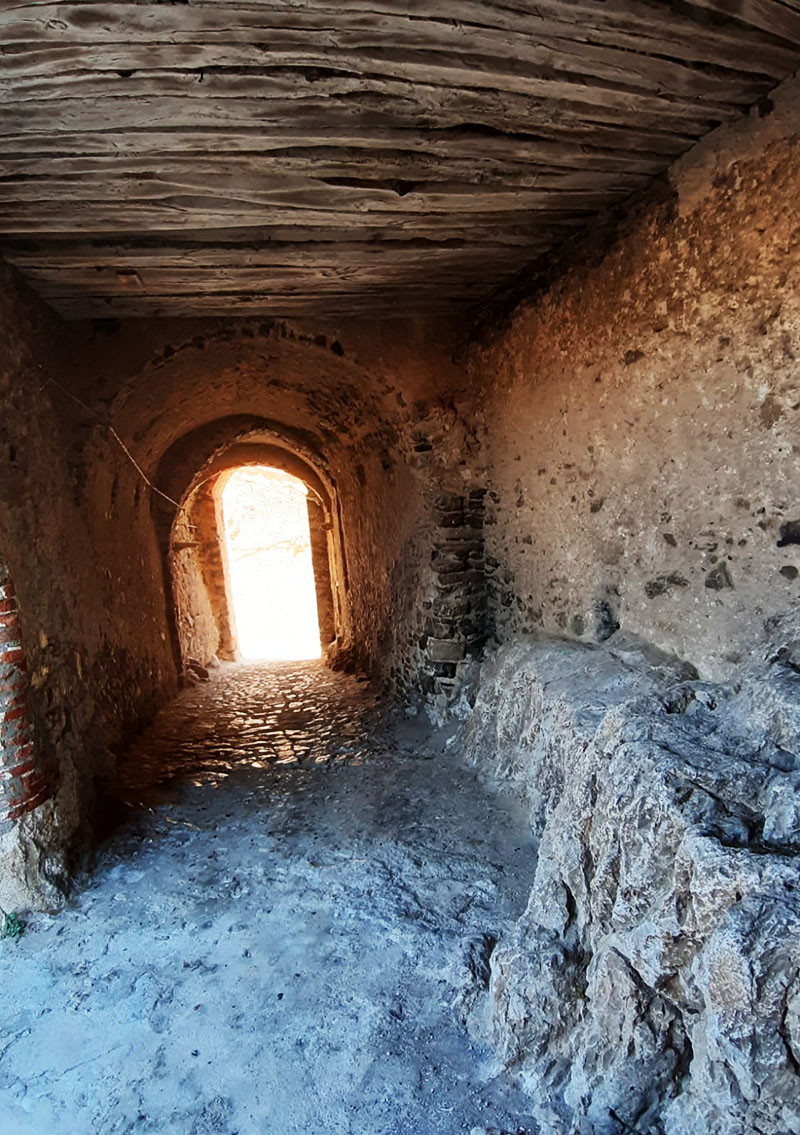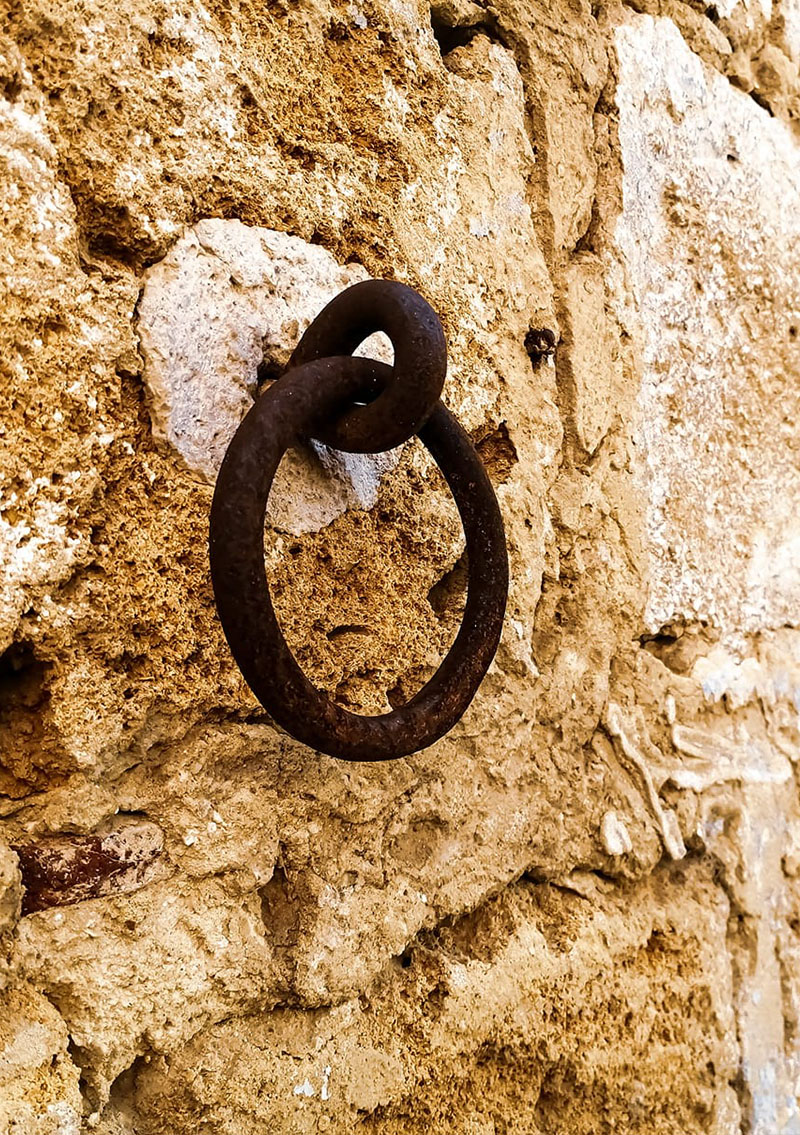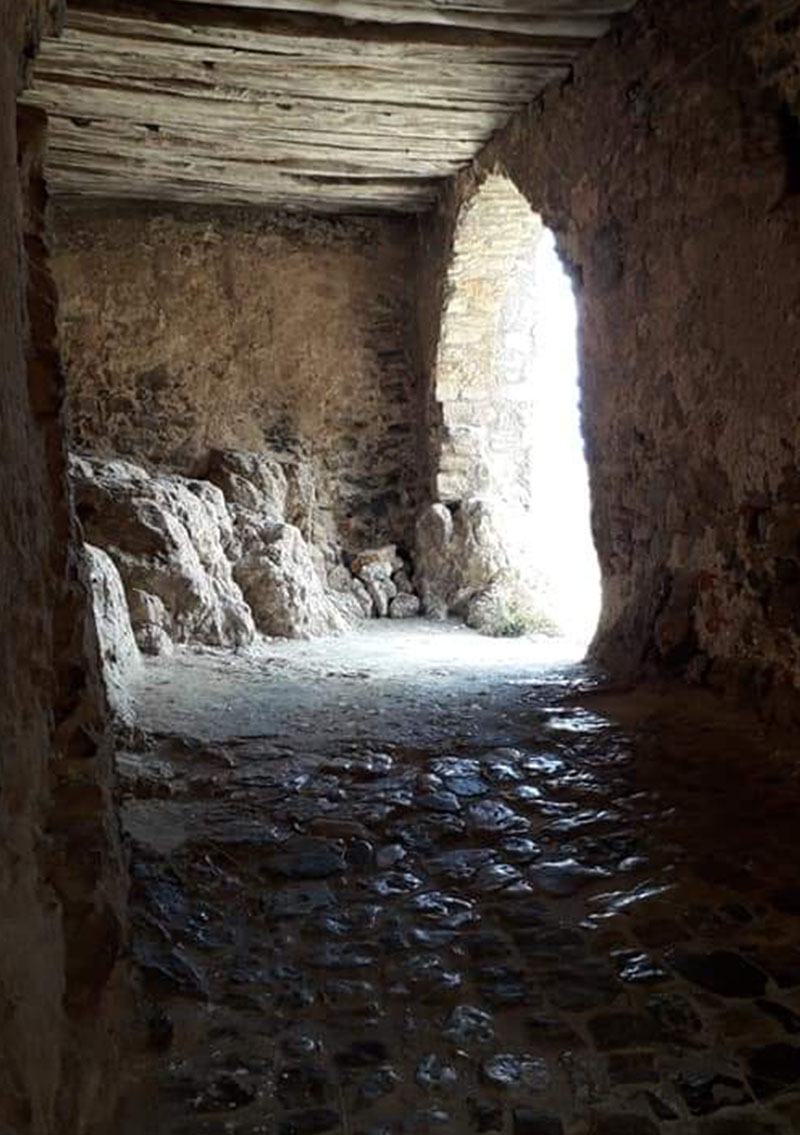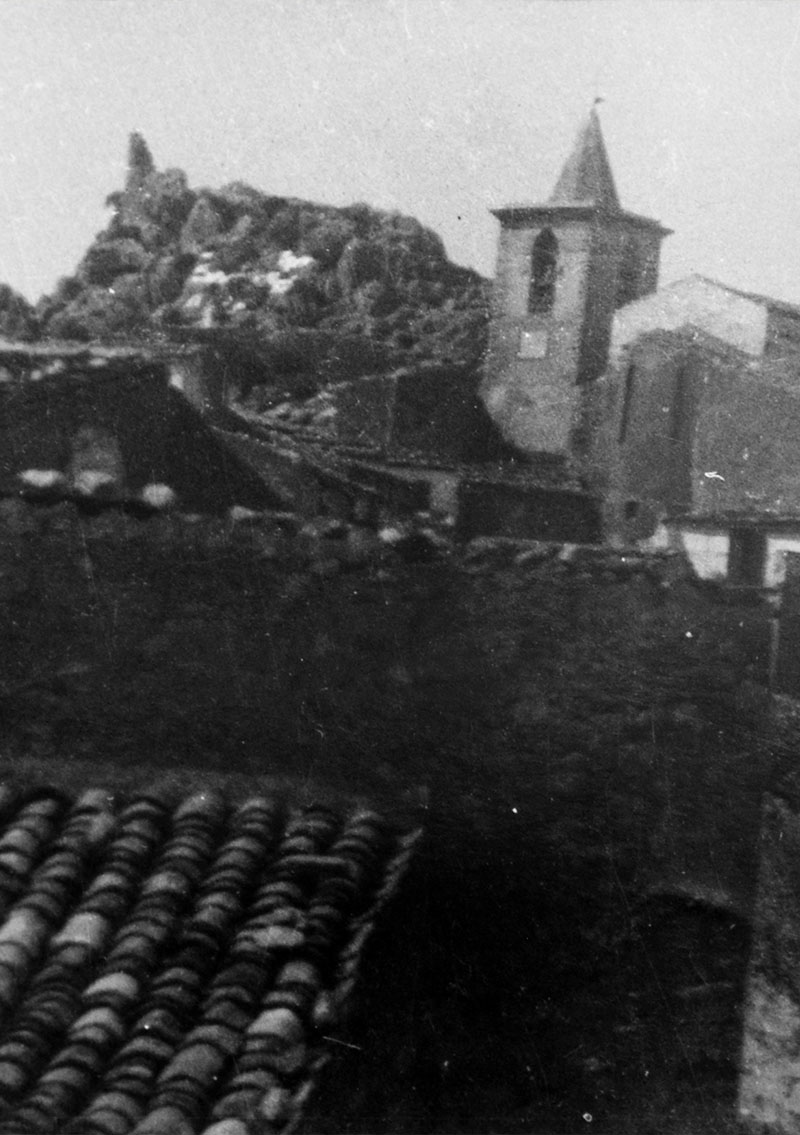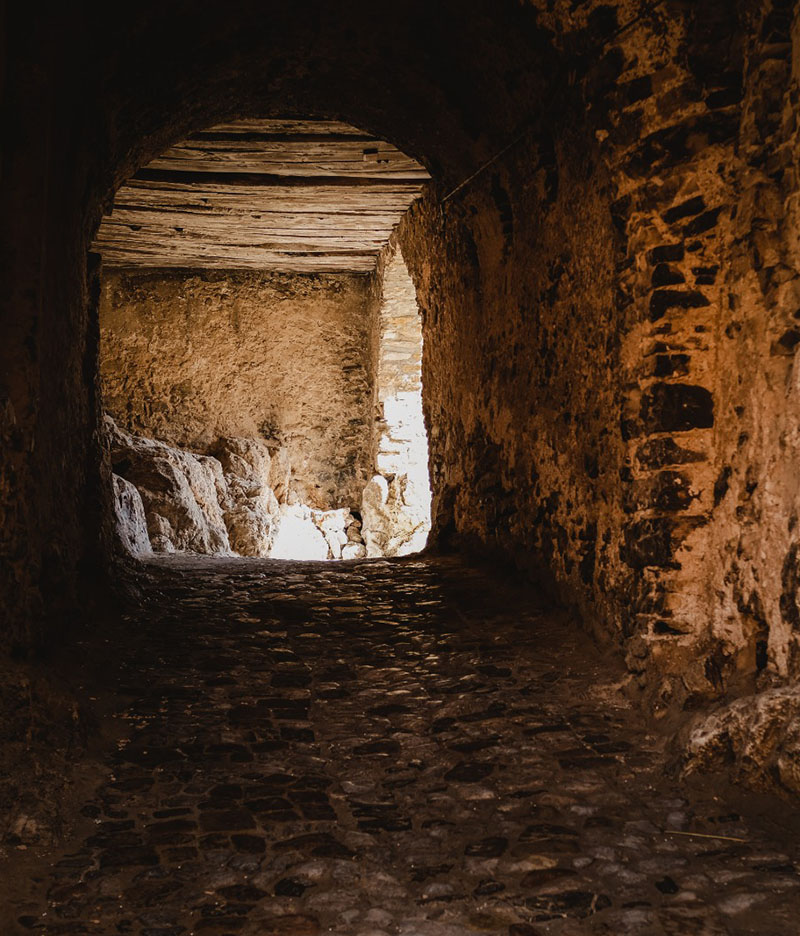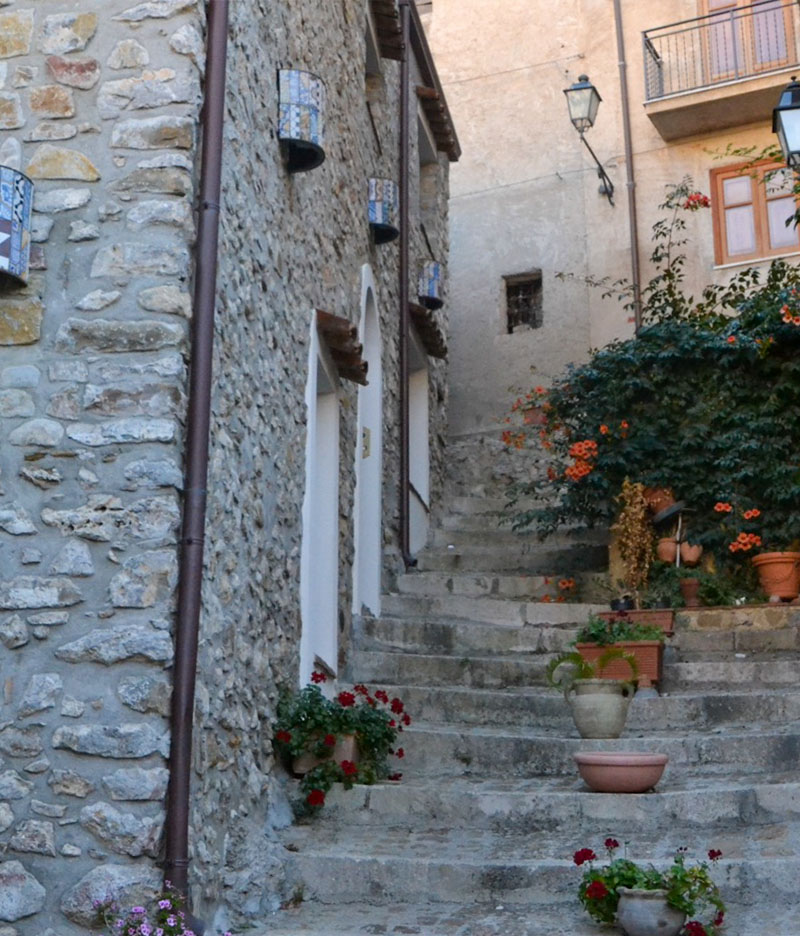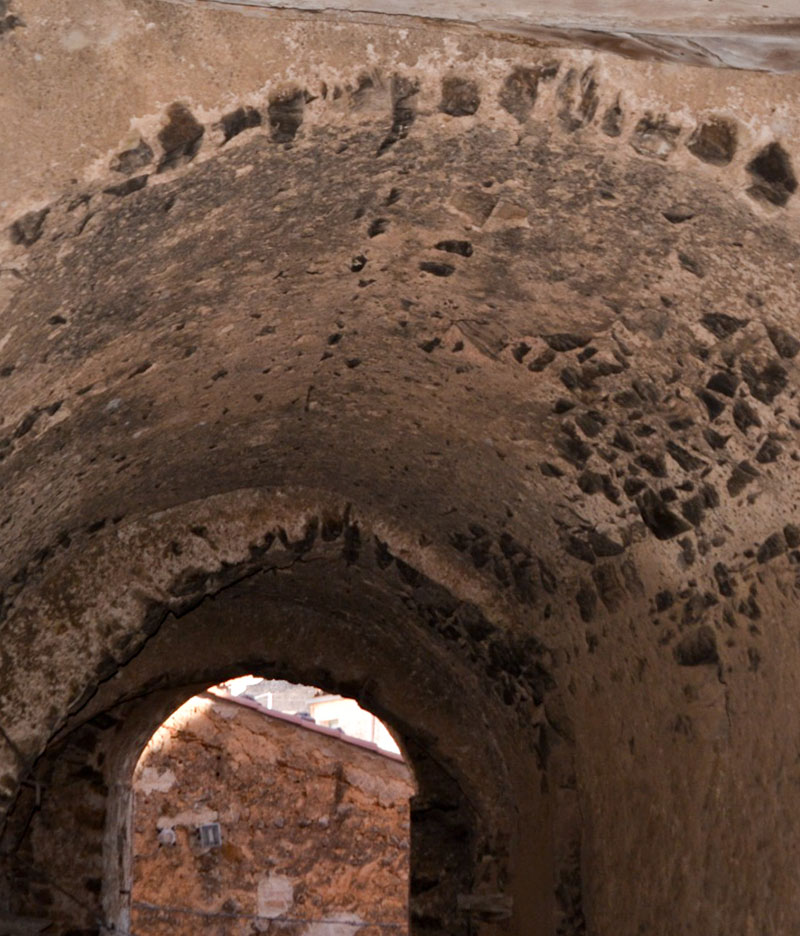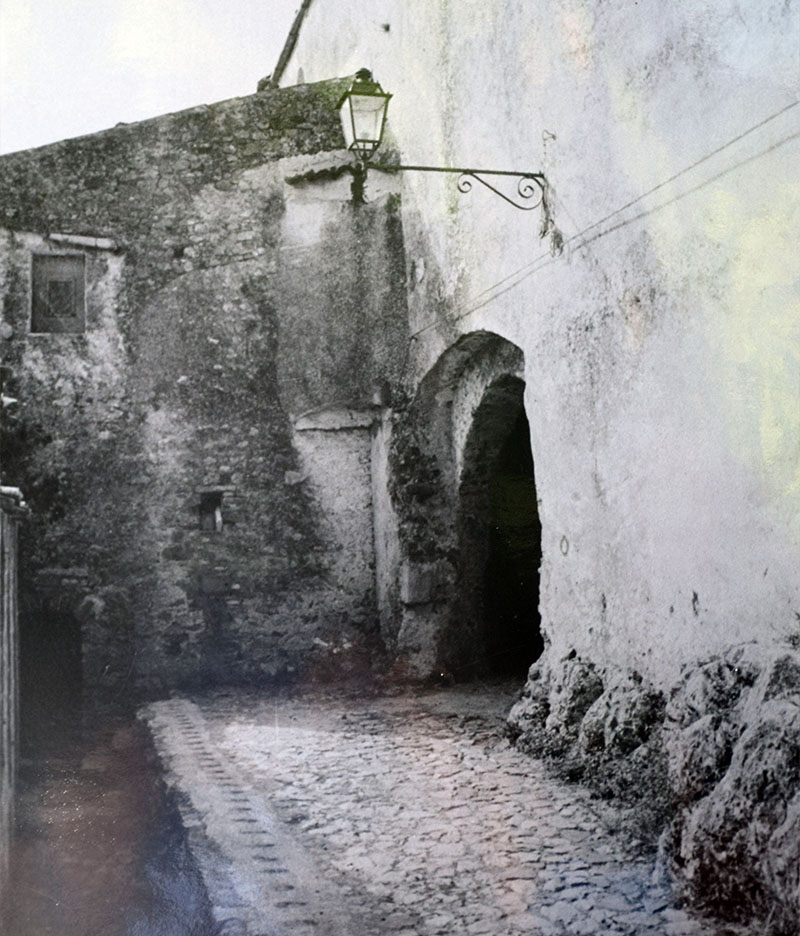Once you arrive in Piazzetta Ponte Silvio you will find yourself in front of one of the first three accesses to the ancient Madonite fortress, which is located in the upper part of the town that was accessed by crossing a bridge, the Ponte Vecchio or Ponte di Silvio.
The other two front doors of the ancient castle were probably built in correspondence with other respective bridges that no longer exist today (Vedasi Di Francesca, 2000). However, these front doors were still existing at least until the 1965 as Passafiume Abbot reported:
“Nella parte vecchia c’è un antichissimo castello, sito in un luogo inespugnabile, costruito ad arte e circondato da solide mura. Vi si accede attraverso tre porte, una delle quali è dedicata a Lorenzo Ventimiglia” (B.Passafiume, 1645), (In the old side there is a particularly ancient castle, located in an impregnable place, very well-built and surrounded by strong walls. You can access it through three doors, one of which is dedicated to Lorendo Ventimiglia).
The door of Lorenzo Ventimiglia
It was the main door dedicated to the Most Illustrious Don Lorenzo Ventimigia Ruiz, who ruled the barony of Gratteri from 1642 to 1675 and whose remains rest inside the Matrice Vecchia. This door was situated to the east, in the lower part, that is bordering the river, right between the old slaughterhouse and the “mulinello” (ventilating fan), the ruins of which are still evident not far from today’s Vicolo Manzoni.
Until some time ago, the citizens of that district called that place “a porta granni” (Scelsi, 1981 p.36). From the consultation of the Riveli, it would be deduced that at that time there was actually a street called “strata di la porta granni”, which was located in the “lu ciumi” dsitrict, today called Via Fiume.
Therefore, this door would be located in the disitrict that revolved around the front door of Ponte Vecchio or Soprano (near the Piazzetta Ponte Silvio).
Mintioni di rustici capu di casa rivela una quarta parti di molino existenti in lo territorio di questa et ne la strata di la porta grandi di prezzo di unci deci (Archivio di Stato-Palermo, Riveli Tribunale Real Patrimonio, V. 1166, anno 1584).
Sisilia Xeusa rivela uno terzo di casa existenti in ditta terra in contrata di la porta grandi suttana confinanti con la casa di Sabella Caro et di altri dui terzi di ditta casa di lo R.do preti Micheli Xeuza et via publica di prezo di unzi 8 (Archivio di Stato-Palermo, Riveli Tribunale Real Patrimonio, V. 1166, anno 1584).
Pizuto Francisco capu di casa di anni 38, rivela una casa existenti nela strata di la porta grandi conf. con la casa di Stefano Tamburello et con la casa di heredi di Joanni Caro (Archivio di Stato-Palermo, Riveli Tribunale Real Patrimonio, v. 1166, anno 1584).



